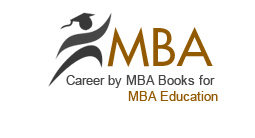Practice note taking exercises well to master the skill. When writing minutes, keep the following key points in mind:
As soon as the meeting has concluded, begin to work on the minutes. The notes taken during the meeting act as a memory prompt and will be more reliable if the meeting is fresh in the secretary / minute taker’s mind.
The minutes that are taken down during the meeting must be transcribed into the style that was previously followed. It is best to keep the minutes in the same style as they were recorded in the previous meetings. There are three basic styles of minutes:
The chapter has been taken from Business Communication book of SMU MBA in the sequence of Styles of Meetings, Agenda of Meeting and Minutes of Meeting.
- They are key points only
- They are a summary except motions, which are verbatim
- They must be entirely accurate – what was said, not how you interpreted what was said or what you would have preferred was said. Your point of view should not be given here, whether you agree/do not with the speaker’s statement.
- Keep a record of every motion and vote; who said what and who moved and passed motions
- Use simple, short words and use simple sentence construction
- Use consistent grammar and use past tense eg. It was concluded, the matter was
- If something is important and you are unsure what was said or who said it, don’t hesitate to ask for clarification
As soon as the meeting has concluded, begin to work on the minutes. The notes taken during the meeting act as a memory prompt and will be more reliable if the meeting is fresh in the secretary / minute taker’s mind.
The minutes that are taken down during the meeting must be transcribed into the style that was previously followed. It is best to keep the minutes in the same style as they were recorded in the previous meetings. There are three basic styles of minutes:
- Report – this is a full record of all discussions that includes the names of all speakers, movers and seconders of any motions, written in a narrative style.
- Minutes of Narration – these include some of the discussions that took place and important details. This style of minutes is considered a legal document.
- Minutes of Resolution – these are limited to the recording of the actual words of all resolutions that were passed. Movers and seconders are not recorded. Each resolution that is made commences with the phase, ‘resolved that’.
The chapter has been taken from Business Communication book of SMU MBA in the sequence of Styles of Meetings, Agenda of Meeting and Minutes of Meeting.
